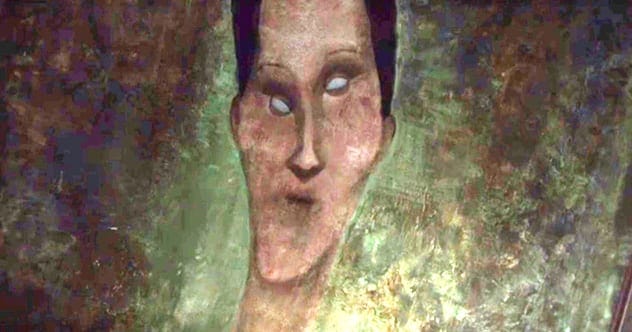Interior and exterior sets, themes, monsters—horror movies often draw inspiration from famous paintings. Directors enhance their visions with art from masters of expressionism, surrealism, and more.The results enrich films, adding depth to their horrific themes.
Picture of Dorian Gray
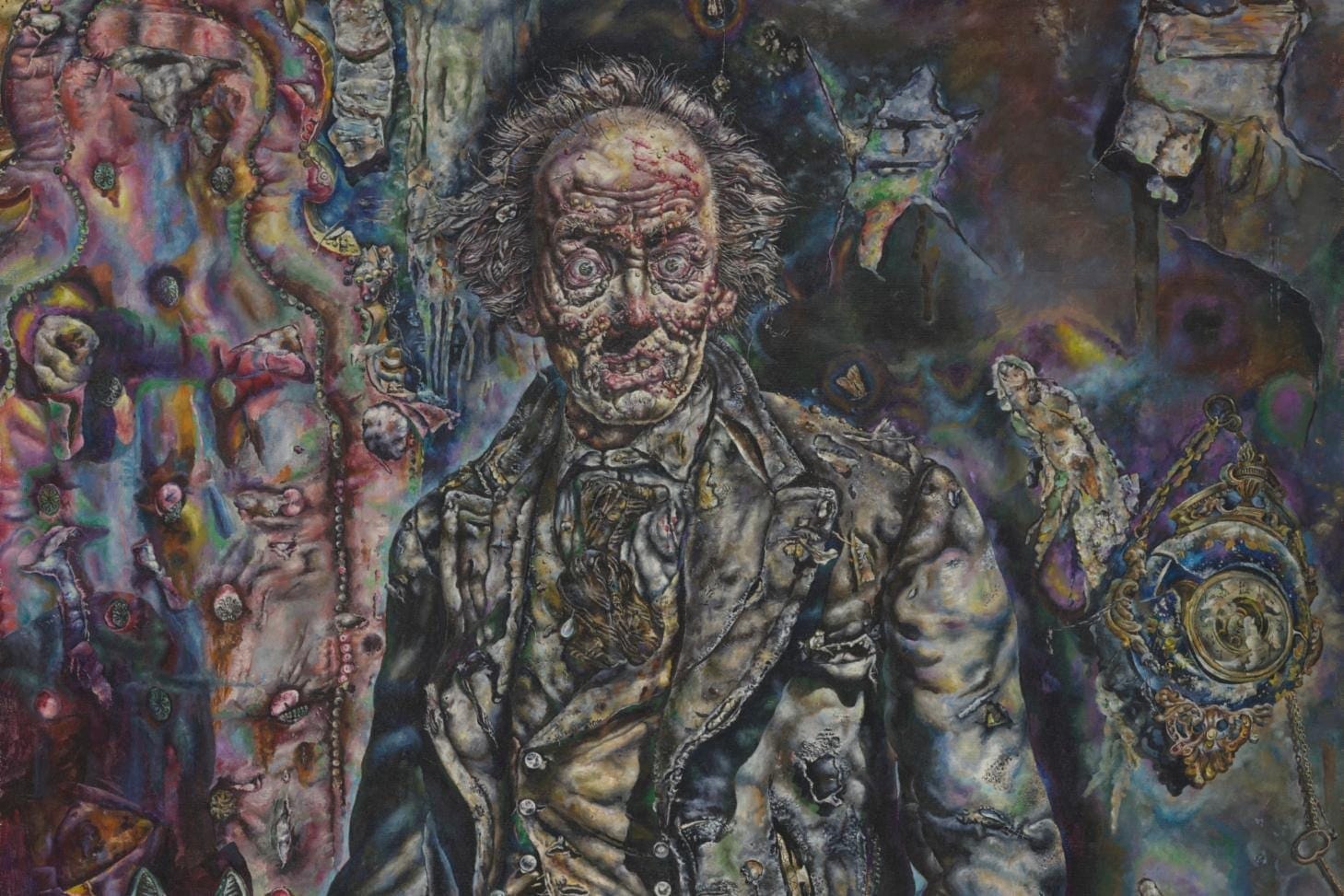 Ivan Albright, the “master of the macabre,” painted the portrait for Albert Lewin’s The Picture of Dorian Gray (1945). This film adapts Oscar Wilde’s novel, where Dorian Gray’s portrait ages instead of him.Albright’s painting, Portrait of Dorian Gray (1943-1944), shows Gray aged and decayed. The painting is in full color to highlight Gray’s horrific transformation, perfectly expressing the movie’s theme: evil corrupts the soul.
Ivan Albright, the “master of the macabre,” painted the portrait for Albert Lewin’s The Picture of Dorian Gray (1945). This film adapts Oscar Wilde’s novel, where Dorian Gray’s portrait ages instead of him.Albright’s painting, Portrait of Dorian Gray (1943-1944), shows Gray aged and decayed. The painting is in full color to highlight Gray’s horrific transformation, perfectly expressing the movie’s theme: evil corrupts the soul.
Witches Sabbath
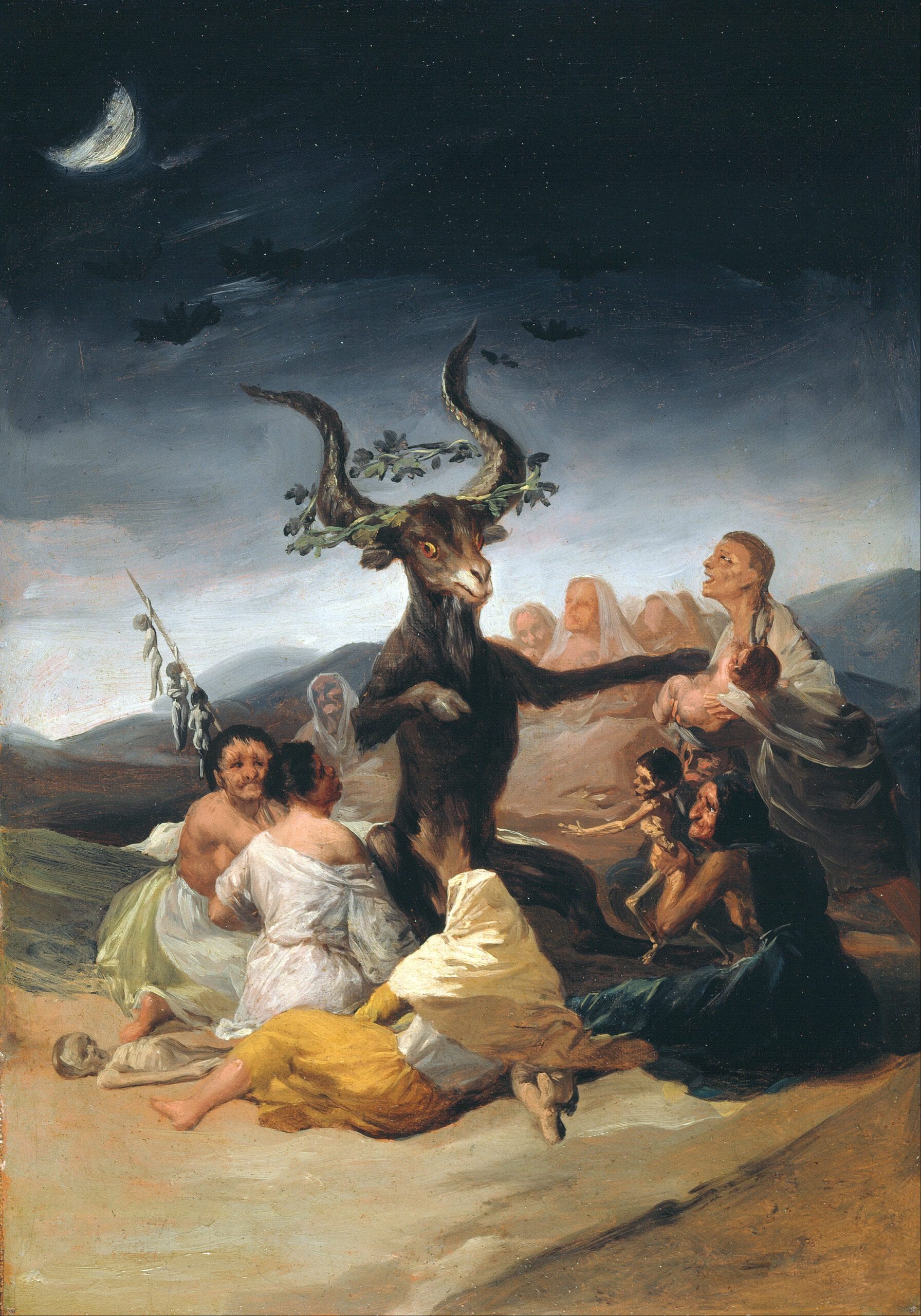 Robert Eggers, director of The Witch: A New England Folktale (2015), aimed for historical accuracy. He wanted his witch to be believable to a 17th-century audience.Eggers drew inspiration from Francisco Goya’s Witches Sabbath (1798). The painting depicts the devil as a goat surrounded by witches, offering nude children as sacrifices. Eggers saw it as a realistic representation of witches.Ironically, critics view Goya’s witchcraft paintings as satire on the superstitions of educated society.
Robert Eggers, director of The Witch: A New England Folktale (2015), aimed for historical accuracy. He wanted his witch to be believable to a 17th-century audience.Eggers drew inspiration from Francisco Goya’s Witches Sabbath (1798). The painting depicts the devil as a goat surrounded by witches, offering nude children as sacrifices. Eggers saw it as a realistic representation of witches.Ironically, critics view Goya’s witchcraft paintings as satire on the superstitions of educated society.
Necronomicon IV and Necronomicon V
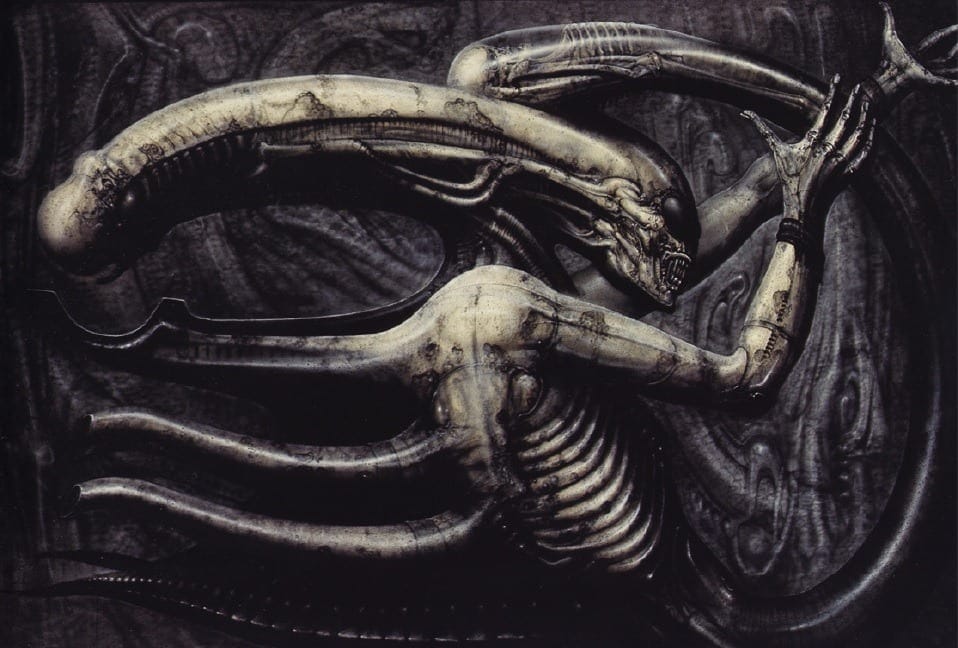 H. R. Giger’s surrealist paintings feature biomechanical figures and monstrous beings. His work inspired the alien creature in Ridley Scott’s Alien (1979).Scott, impressed by the horror and beauty of Giger’s Necronomicon IV (1976) and Necronomicon V (1976), asked Giger to follow their form. Giger won an Academy Award for his work on the movie.
H. R. Giger’s surrealist paintings feature biomechanical figures and monstrous beings. His work inspired the alien creature in Ridley Scott’s Alien (1979).Scott, impressed by the horror and beauty of Giger’s Necronomicon IV (1976) and Necronomicon V (1976), asked Giger to follow their form. Giger won an Academy Award for his work on the movie.
The Garden of Earthly Delights
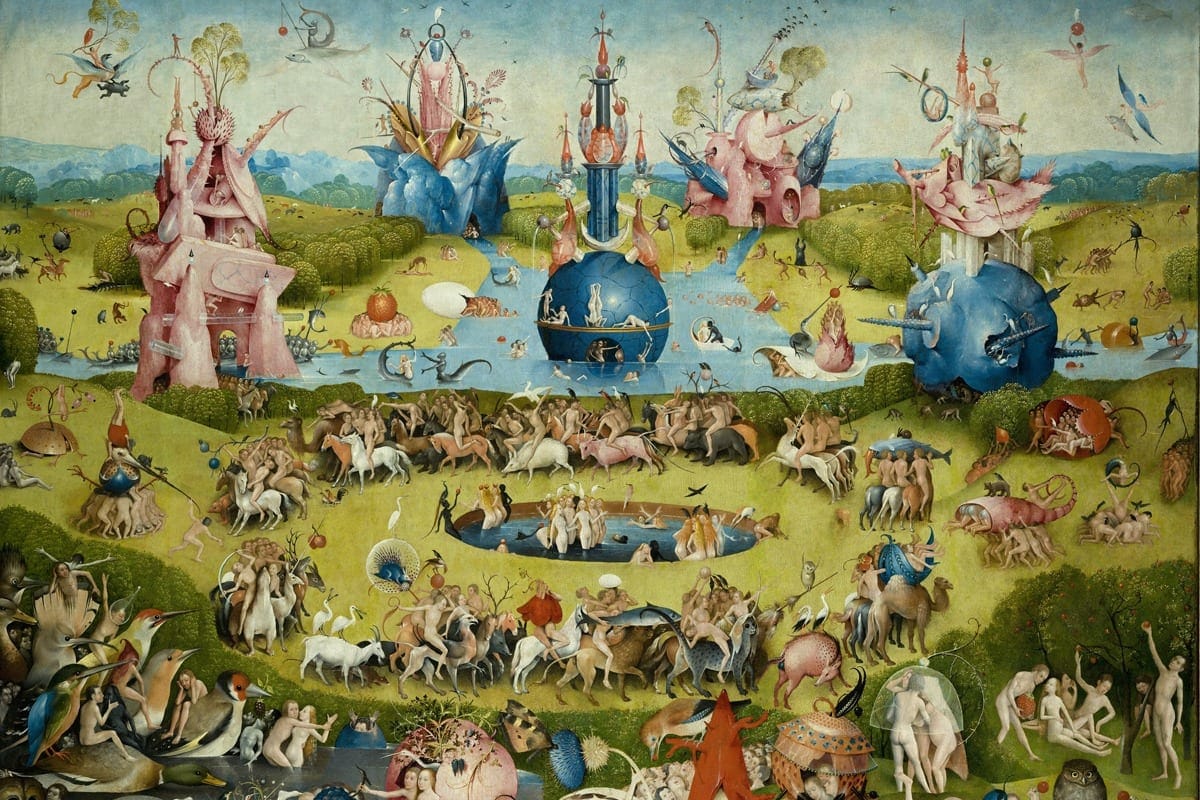 In The Exorcist (1971), the voice of the possessed Regan MacNeil was a challenge. Director William Friedkin and sound department head Chris Newman found inspiration in Hieronymus Bosch’s The Garden of Earthly Delights (1490-1510).Friedkin showed Newman the painting’s hell panel, suggesting that the voice of Satan should sound like the demons depicted. They created a cacophony of sounds, including croaking frogs and bumblebees.
In The Exorcist (1971), the voice of the possessed Regan MacNeil was a challenge. Director William Friedkin and sound department head Chris Newman found inspiration in Hieronymus Bosch’s The Garden of Earthly Delights (1490-1510).Friedkin showed Newman the painting’s hell panel, suggesting that the voice of Satan should sound like the demons depicted. They created a cacophony of sounds, including croaking frogs and bumblebees.
The Empire of Light
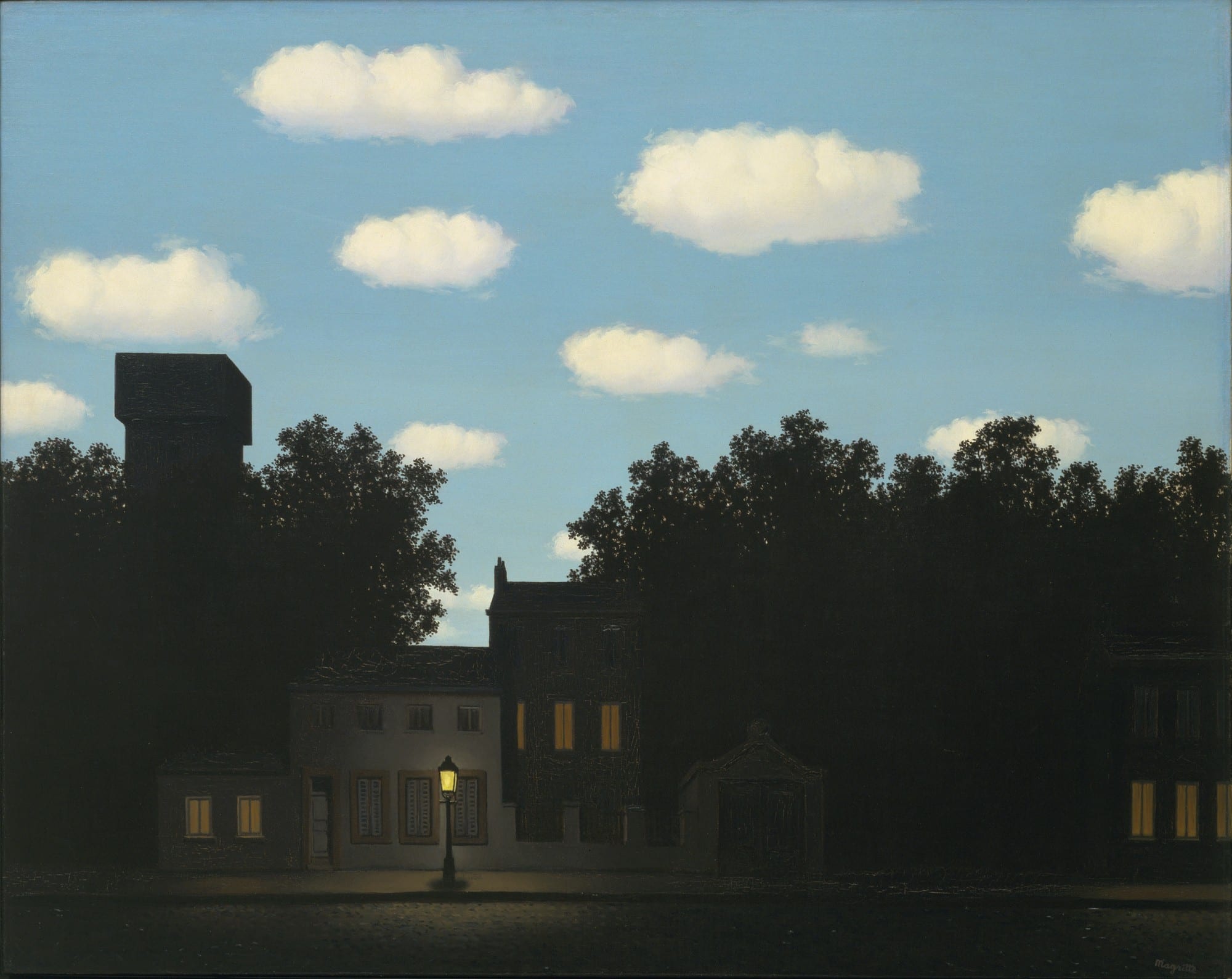 Rene Magritte’s The Empire of Light series (1940s-1960s) inspired an exterior shot in The Exorcist. The paintings feature a house under a daytime sky, lit by a lamppost.The juxtaposition of day and night creates an eerie scene, perfect for a film about demonic possession. The bright sky symbolizes heaven, while the darkness symbolizes evil.
Rene Magritte’s The Empire of Light series (1940s-1960s) inspired an exterior shot in The Exorcist. The paintings feature a house under a daytime sky, lit by a lamppost.The juxtaposition of day and night creates an eerie scene, perfect for a film about demonic possession. The bright sky symbolizes heaven, while the darkness symbolizes evil.
Amedeo Modigliani Paintings
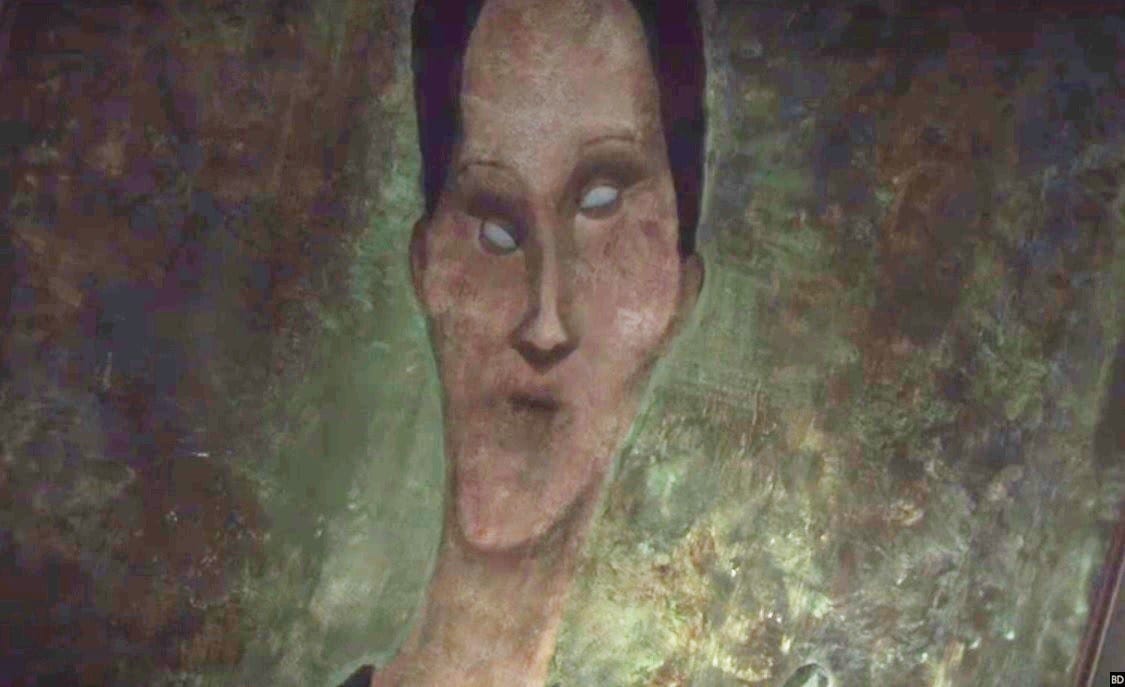 In Andy Muschietti’s 2017 adaptation of Stephen King’s It, the monster takes many forms. One form is a female flutist from an Amedeo Modigliani painting.The flutist is terrifying due to her elongated face and asymmetrical features. Muschietti explained that this was a literal translation of a childhood fear, inspired by a Modigliani print in his house.
In Andy Muschietti’s 2017 adaptation of Stephen King’s It, the monster takes many forms. One form is a female flutist from an Amedeo Modigliani painting.The flutist is terrifying due to her elongated face and asymmetrical features. Muschietti explained that this was a literal translation of a childhood fear, inspired by a Modigliani print in his house.
The Nightmare
 Henry Fuseli’s The Nightmare (1781) depicts an incubus on a sleeping woman, with a horse’s head in the shadows. This painting inspired the 2015 film The Nightmare, directed by Akiz.The film features Tina sleeping with a demonic creature next to her. The creature’s ambiguous significance makes the film open to interpretation, representing madness, estrangement, or fear of rejection.
Henry Fuseli’s The Nightmare (1781) depicts an incubus on a sleeping woman, with a horse’s head in the shadows. This painting inspired the 2015 film The Nightmare, directed by Akiz.The film features Tina sleeping with a demonic creature next to her. The creature’s ambiguous significance makes the film open to interpretation, representing madness, estrangement, or fear of rejection.
House by the Railroad
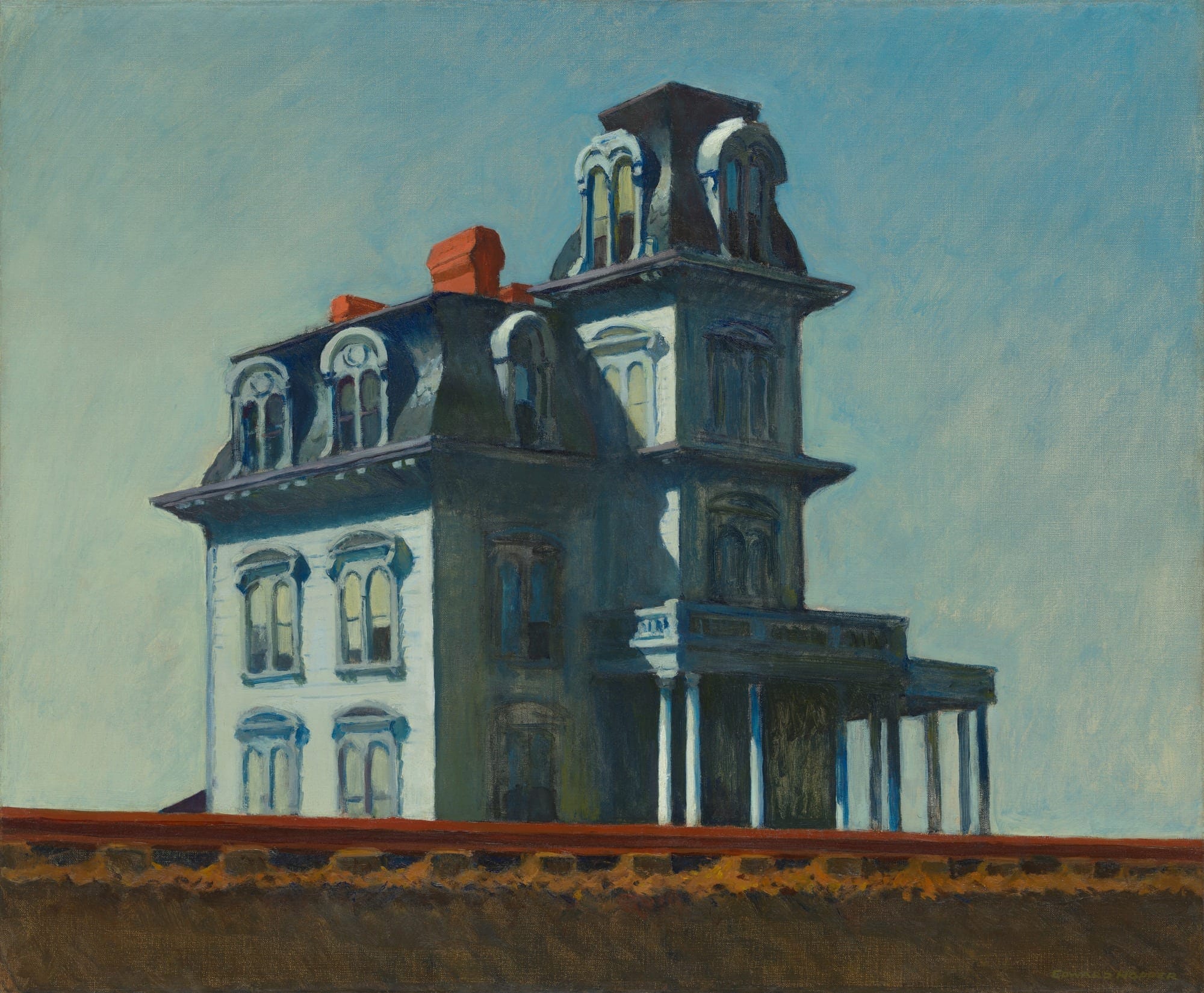 Norman Bates’s Victorian house in Alfred Hitchcock’s Psycho (1960) is iconic. The inspiration for this house of horrors is Edward Hopper’s 1925 painting, House by the Railroad.The painting depicts a grand Victorian home isolated in an empty landscape. This creates a forbidding mood, isolating Bates and allowing him to live in a world of loneliness and madness.
Norman Bates’s Victorian house in Alfred Hitchcock’s Psycho (1960) is iconic. The inspiration for this house of horrors is Edward Hopper’s 1925 painting, House by the Railroad.The painting depicts a grand Victorian home isolated in an empty landscape. This creates a forbidding mood, isolating Bates and allowing him to live in a world of loneliness and madness.
Susanna and the Elders
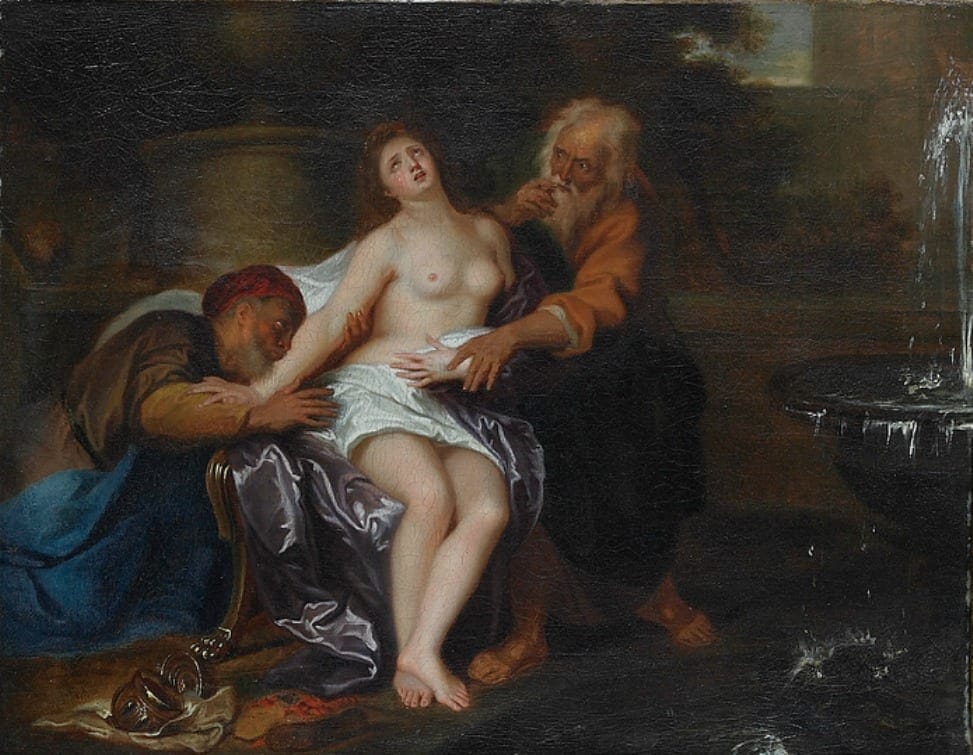 Another painting inspiring Psycho is William van Mieris’s Susanna and the Elders (1731). A print of it hangs in the parlor behind Bates’s office, covering a peephole.The painting depicts Susanna being spied upon as she bathes. This underscores parallels between Susanna’s plight and Marion Crane’s, intensifying the movie’s suspense and implicating the audience in voyeurism.
Another painting inspiring Psycho is William van Mieris’s Susanna and the Elders (1731). A print of it hangs in the parlor behind Bates’s office, covering a peephole.The painting depicts Susanna being spied upon as she bathes. This underscores parallels between Susanna’s plight and Marion Crane’s, intensifying the movie’s suspense and implicating the audience in voyeurism.
Venus with a Mirror
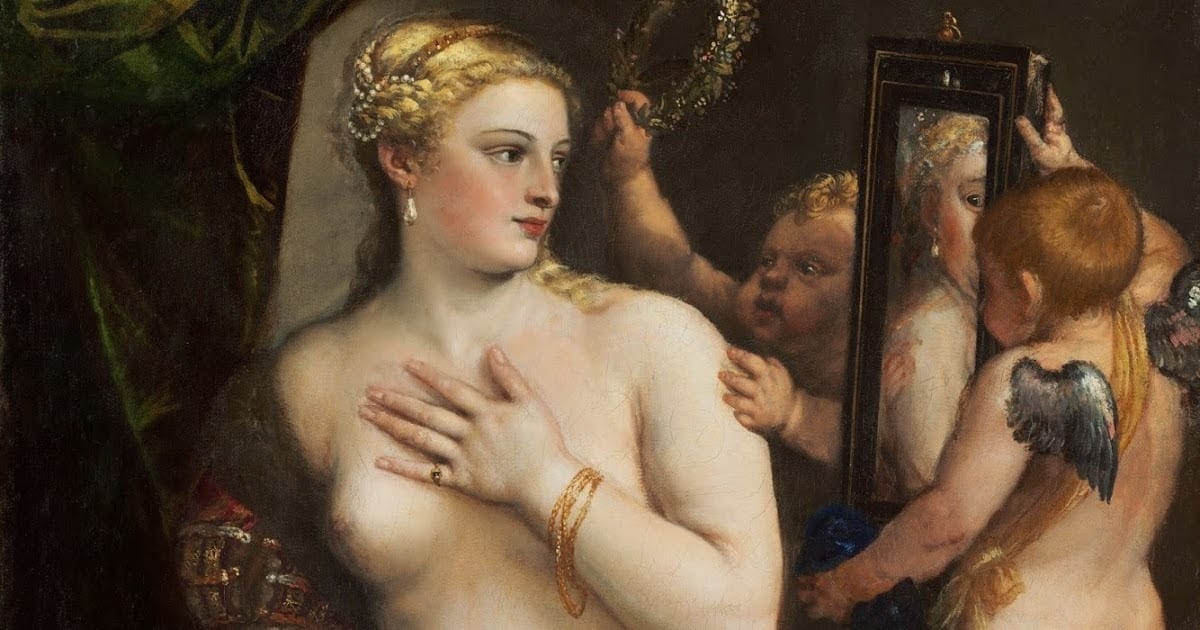 The Bates Motel parlor also features Titian’s Venus with a Mirror (1555). The painting depicts a half-naked goddess admiring herself, suggesting pleasure and self-contemplation.The display of Venus with a Mirror alongside Susanna and the Elders creates multiple meanings. These include voyeurism, desire, violence, and the conflict between temptation and repression faced by Norman Bates.
The Bates Motel parlor also features Titian’s Venus with a Mirror (1555). The painting depicts a half-naked goddess admiring herself, suggesting pleasure and self-contemplation.The display of Venus with a Mirror alongside Susanna and the Elders creates multiple meanings. These include voyeurism, desire, violence, and the conflict between temptation and repression faced by Norman Bates.


